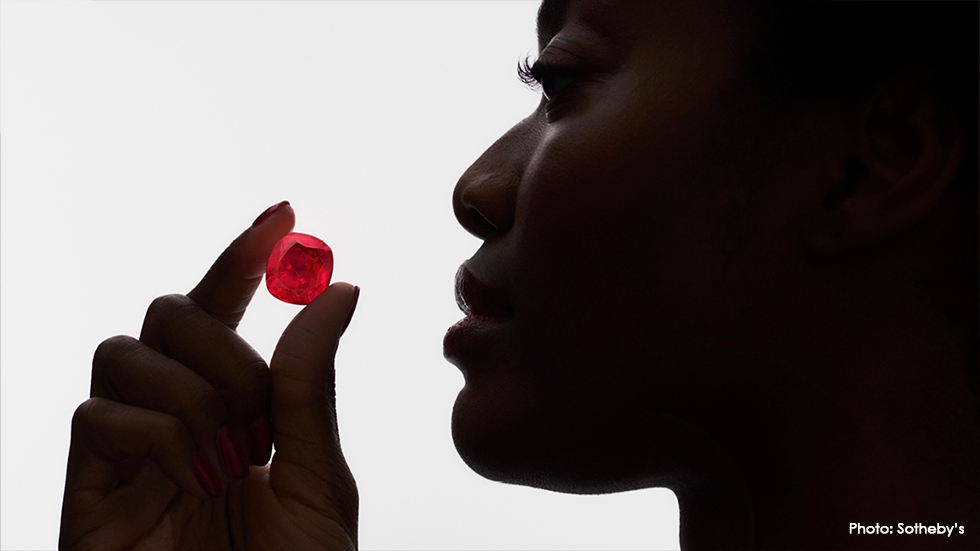The Estrela de Fura, a 55.22-carat ruby from Mozambique, has set a new world record for the most expensive gemstone ever auctioned. The stone sold for $34.8 million at Sotheby’s in New York on June 8, 2023. That’s a whopping USD630,288 per carat. The previous record was held by a 25.59-carat Burmese Ruby, which sold for $30.33 million in 2015.
The sale of the Estrela de Fura is yet another sign of the growing demand for coloured gemstones. In recent years, there has been a surge in the prices of Rubies, Sapphires, Emeralds and even Spinels. It is also a sign of the growing importance of Mozambique as a source of Ruby. The country has been producing high-quality Ruby for many years, but the recent discovery of the Estrela de Fura has put Mozambique on the map as a major player in the global gemstone market.
That said, the current world auction record price per carat for any gemstone is still held by The Crimson Flame Ruby of Burmese origin at a jaw-dropping USD1,221,603.
The gem trade is a complex industry steeped in tradition. Like any commodity, prices of gems fluctuate based on a myriad of factors from supply and demand dynamics, rarity, and quality, to the prevailing economic climate. However, prices for high-quality, rare and popular gemstones – especially those of larger sizes (and yes, size is relative) – aren’t coming down to levels that make them affordable for most people. Much like a GCB in Singapore!
So how can aspiring gem collectors without towering budgets acquire a desirable, rare gem at a reasonable price? I have a few pointers, but the main one I wish to highlight is:
Buy when a mine is still in operation or producing.
Once a mine stops producing, the supply of gems from that source dries up, and prices skyrocket. Burmese Rubies and Brazilian Paraiba Tourmalines are great examples of this. It is human nature to take for granted what is available, and only want what is no longer in production. This is especially true when it comes to gemstones.
Beauty drives demand. Rarity drives price.
In the gem world, when a stone is beautiful, rare and in demand, it is considered PRECIOUS. And the price of a gemstone will be reflected in all three of these factors.
Therefore, it is unrealistic to insist on a certified, no-heat ‘pigeon blood’ Ruby of Burmese origin when one is on a budget. If you are hoping to find something of good value (not cheap, because beautiful, rare, in-demand stones never are), then look for stones of origin that are still in production. For example, Mozambique Ruby or Zambian Emerald. The more these mines are still producing, the higher your chances of acquiring that precious gem at a reasonable price.
Remember, these are finite resources, and more does not necessarily mean plentiful.
